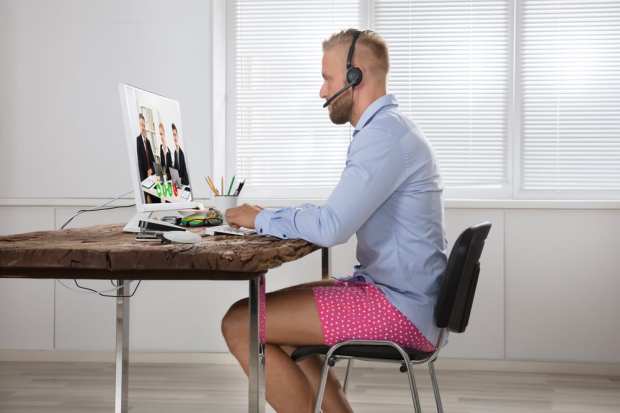The World Unfiltered: What We’ve Learned About Each Other In The Last Two Weeks (Whether We Wanted To Or Not)

In 2004, Dove launched what it called “The Campaign for Real Beauty,” a marketing strategy developed to focus on “the natural physical variation embodied by all women and inspire them to have the confidence to be comfortable with themselves.”
In practical terms, that meant forswearing the make-up magic, lighting tricks and extensive Photoshopping normally associated with beauty brands’ advertising and marketing materials in favor of focusing on a wide variety of women presented “as they are” – minus the heavy makeup and hair, gauzy gold light and digital editing of imperfections. The campaign has been popular and widely imitated in the intervening 15 years or so, and an awful lot of brands have leaped on the naturalist “no Photoshop” bandwagon. CVS, Modcloth, Bongo, Aerie and Seventeen magazine are just a shortlist.
“We don’t need digital transformations to misrepresent our products,” actress and Neutrogena brand consultant Kerry Washington told the “TODAY” show. “Our products are strong, our spokespeople are proud and we can just be out there in the world celebrating our beauty, using the products to put our best face forward without the help of computers.”
And that’s what we have seen over the last few weeks.
When Famous People Start to Look Like Regular People
In the spirit of fairness, we should note that some celebrities and influencers are completely unaffected by the current coronavirus crisis. Kim Kardashian and Ryan Seacrest, for example, might be broadcasting from home, but they look utterly unchanged and absolutely fantastic. So fantastic that one can only conclude they’ve either quarantined themselves with a full crew of hair and make-up professionals or they’ve become expert hair and make-up technicians with all of their newfound free time.
On a related note, Anderson Cooper’s hair continues to be a silver beacon of hope in dark times. But given that his hair has famously thrived during hurricanes, floods, wildfires, wars and earthquakes, its immunity to a global pandemic should be surprising to no one.
Also filed under things that should not be surprising, Kim K. is still conducting commerce in the age of COVID-19, in case anyone is wondering – commerce for the greater good, of course. Kardashian was on Instagram earlier this week promoting her shapewear brand SKIMS, noting that the brand will donate 20 percent of its sales proceeds to Baby2Baby’s COVID-19 Emergency Response Program that provides basic essentials to children and families impacted by the outbreak.
Shapewear also seems like the perfect essential right now, as we all do our best to battle the COVID-19 pounds likely to come from one too many trips to the fridge while working at home.
But Ryan, Kim and Anderson are shaping up to be more of the exception than the rule in the world of celebrities, newspeople and influencers suddenly navigating a work-from-home world, with the added complication that everyone in the world is watching them do it.
Some, like the team at “PBS NewsHour” and the anchors working from home at MSNBC, are trying to at least create the illusion that they are in a studio by sitting in front of a green screen. The occasional cat or small child wandering through the shot damages the facade from time to time, but the effort is being made.
Others, like the team at the “TODAY” show, have dropped the pretense. The time is now to learn what Al Roker’s living room looks like or that Craig Melvin has a hallway in his home that’s apparently covered in palm tree-printed wallpaper.
Ryan Seacrest’s co-host Kelly Ripa is also broadcasting from her bedroom, and though she still looks pretty fresh, she’s noted that it’s still early and things will get darker from here. Literally darker – she can’t see her colorist and she’s not a natural blonde, which means, by her own admission, she’s growing her roots like a victory garden at the moment.
And while dark roots are rough, Kevin Hart only wishes he were still growing black hair. Sadly, his real gray is coming through for the world to see. In fairness, given his commentary on the subject, it doesn’t seem he’s taking it that hard.
“I have always had a sh** load of grey hair … I was just a frequent dyer 😂😂😂😂 … I’m not working right now, so I said F**K IT 😂😂😂,” he wrote.
And the “can’t beat it, lean into it” mindset is not unique to Hart these days. Instagram’s fashion influencers – once the end all/be all of glossy shots, sparkly looks and a lot of heavily filtered reality – are repositioning their posts for the era of quarantine. Instead of high gloss, the professionally photographed and aspirational influencers like Katie Sands are pivoting to fewer filters and more intimate, inspirational views.
“I have had a bunch of followers reach out and say, ‘What do you think is going to happen to the blogosphere? Do you think the blogging industry will go away?’ and I, personally, think it’s actually the opposite,” Sands told The Verge. “I think that it’s going to become stronger than ever. People, including myself, I’m looking to the creators I follow for different inspiration – for home recipes, for workouts, for work-from-home outfits, for beauty advice.”
But Sands also conceded that business is down and that brand partnerships have fallen through, as uncertainty has shaken the entire economy. It remains to be seen how and whether it will recover, and whether Instagrammers will be as likely to shop the homier, less idealized image that influencers are now crafting as opposed to the higher glitz that came before.
Digitally Moderated, and Yet Too Real
It’s not just the rich, famous and semi-famous, unfiltered and in their natural state, that normal consumers are seeing in a more naturalistic context – it’s each other. On conference calls hosted out of bedrooms, kitchens, dens and garages all over the world, co-workers are learning all kinds of things about their co-workers that they didn’t ever need to know.
Like their decorating taste, their housekeeping skills, how many children they have and how covered with grape jelly those children are at the moment. Whether they’re a dog lover or a cat fan, what they eat, or even what their pajama bottoms look like (should someone forget that they only got half-dressed that day and stand up during the call). What they read, how well they take care of their plants – the list goes on and on.
We’ve also learned anecdotally that almost no one in America is a truly successful houseplant owner – and given that we’re almost all working from home now, everyone should really start watering their plants.
Finally, it seems that pets of all kinds will greatly improve any Zoom-based meeting. Dogs seem to lead as the most popular animal in video calls, but apparently, cats, birds and fish have also made very successful guest appearances. (Children, interestingly, seem to cause the exact opposite reaction, though they are also playing co-starring roles in many corporate calls.)
Perhaps most notably, however, isn’t what people are learning about each other (which, most agree, isn’t bad so much as it is excessive), but what they are learning about themselves. Many of them miss going to work – commute, parking, open office space and all. And not going to work is making people go a little nuts.
“I fired my dog for being a lazy co-worker, and then rehired him because I needed someone to chat with at the water cooler,” one woman tweeted on the #IKnewIHadCabinFever thread.
Yes, things are admittedly strange out there, and we’re learning as a society that there might be such a thing as too much realness all at once. But in the end, real beauty is all we need – especially now.
